The article will tell you about this kind of decorative honeysuckle, like "Capryfall" and the peculiarities of plant care.
Contents
- Decorative honeysuckle Capryfol - fragrant curly liana: varieties and species
- How to plant, transplant the honeysuckle Caprypholus in spring for a hedge in the open ground?
- Honeysuckle Capryfolle: Reproduction by layers
- Care of honeysuckle Capryphol: basic rules and advice
- Sweet honeysuckle Caprypholus: frost resistance of a plant. Honeysuckle Capryfall - preparation for winter: whether it is necessary to cover?
- Honeysuckle Capryfol in landscape design: photo
- Honeysuckle Capryfall: can I eat berries?
- Video: "CapryFol in all its glory"
Decorative honeysuckle Capryfol - fragrant curly liana: varieties and species
Unlike edible honeysuckle , decorative( such as "Capryfol") serves only to decorate the plot of land. They plant it mainly in order to green fences, walls, fences( in other words, "vertical squares").The plant is curly and grow it is not so difficult. Careful care and proper feeding of honeysuckle will allow you to achieve excellent results.
INTERESTING: Few people know that there are a lot of varieties of this ornamental plant - about 200 names.
Popular decorative species:
- "Capryfol" - is the most "old" type of plant. It differs in that it blossoms first. Her flowers are light yellow with an orange and a red tinge( they can darken by the end of summer).After flowering it is covered with bright small fruits. Well "wintering", has a lush greenery.
- "Korolkova" - is a beautiful vine that is distinguished by its abundant and large-scale flowering. Flowers of a gentle pink shade completely cover the bush, closing the green of the bush.
- "Curling Honeysuckle" - has unusual and beautiful flowers of light pink and purple hues( sometimes dark).Such flowers are distinctive in that they are "honeycombs".But the purple flowers should beware, because they are poisonous.
- "Gerald" - this species has a yellow bloom. It differs in that it remains green until spring. Then, when the vine leaves young shoots, the old foliage falls off.
- "Tatar" - lush vegetation and an abundance of small pink tubular flowers distinguish this liana from others. Sometimes you can find varieties with orange and even blue hues.
- "Brown" - differs beautiful decorative foliage( green-blue).The flowers of the plant have a bright "carrot" color.
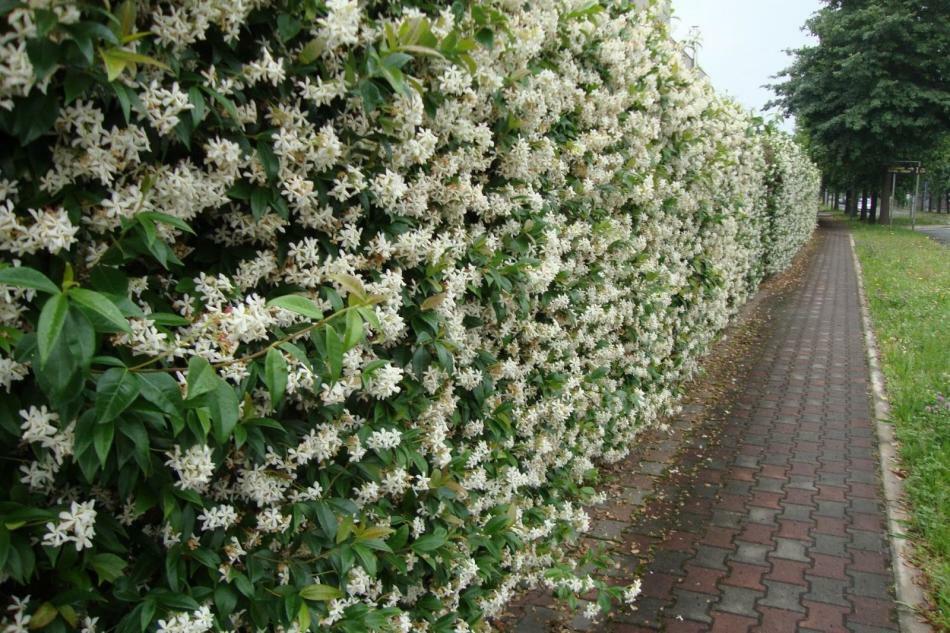 Decorative view of
Decorative view of How to plant, transplant the honeysuckle Capryfall in the spring for a hedge in the open ground?
"CapryPol" will always decorate your site, it will give him not only nice color, brightness, abundance of colors, but also will attract the abundance of butterflies in your garden with its sweet aroma. If you want to duplicate Capryphol, you can do this in several common ways:
- Seeds( deepening them into prepared soil)
- Cuttings( growing seedlings)
- With cuttings( deepening them into the ground)
IMPORTANT: If you want to grow honeysuckle from seeds, youshould be aware that only fresh seeds( the second year) are suitable.
How to collect the seeds:
- Collect the ripe fruit
- Empty the seed from the pulp
- Wash
- Dry, then start growing the seedlings
If you wish to transplant with cuttings, you should know that you need to harvest the "material" as early as the end of the summer( last season).Cut off from the creeper a few cuttings, which will have at least 3 interstices. Cuttings should be slightly scratched and lubricated with a stimulating solution for root growth( purchase in a professional store).Then place in water and hold until the first roots appear. Cuttings place in a special soil: a mixture of sand and peat. When they are well rooted - carry them to the ground. Rooting of the layers is the easiest way to reproduce "Capryfall".It is not difficult to do this if your plant already has an "adult" plant.
Honeysuckle Capryfolle: Reproduction by layers
The technology is simple:
- Find the right tin( do not tear it)
- Incase it
- Dig into the ground
- Water
- After a while, the roots will appear in the incision site( then you can dig the litters and transplant).
IMPORTANT: Take into account the fact that "Capryfall" negatively relates to numerous transplants. If you change the location of the plant frequently, it may die.
In order for the plant to take root:
- Prepare fertile soil( pour in compost).
- Add a complex of mineral fertilizers( top dressing for honeysuckle).
- Do not forget about the ash, it can "deoxidize" the soil( "Capryfall" does not like too "sour" soil and does not take root in it).
Reproduction and transplantation of "Caprypholi" is best done in the spring( April and May are the best time).Count on the fact that for the year the lian will rise no more than 2 meters. The first "years of life" plants are "sensitive" to temperature changes and so try to cover them for the winter with nets and synthetic bags( so as not to freeze).While the liana will be in the period of active growth, do not forget to dive it, cut it and form it - it will strengthen growth and make the fence beautiful.
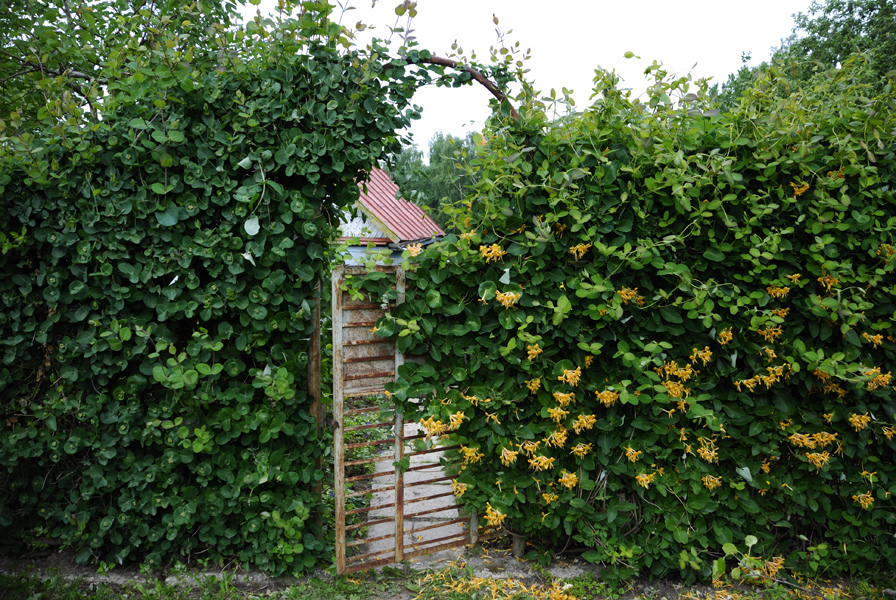 "Capryfol"
"Capryfol" Care for honeysuckle CapryPol: basic rules and advice
"Capryfol" is good because it does not require excessive care. The most important thing is to build a support for it, according to which it can grow. If there is no support, then the fence, the grid or even the wall - just the same. By its weaving, the liana can reach up to 5 meters( about 5-6 years of life).
IMPORTANT: After planting the plant in the soil( by any method), it is necessary to add fertilizing to the soil( it will provide a rich flowering and good growth).
Other care features:
- Winter shelter( only for the first 2-3 years)
- Cutting the frozen winter stems
- Be sure to remove the weeds around the
- . The plant is very fond of watering and spraying( in droughts, increase the portions of water).
- Trim the "extra" stems, forming the crown
- Care for the plant, avoiding disease
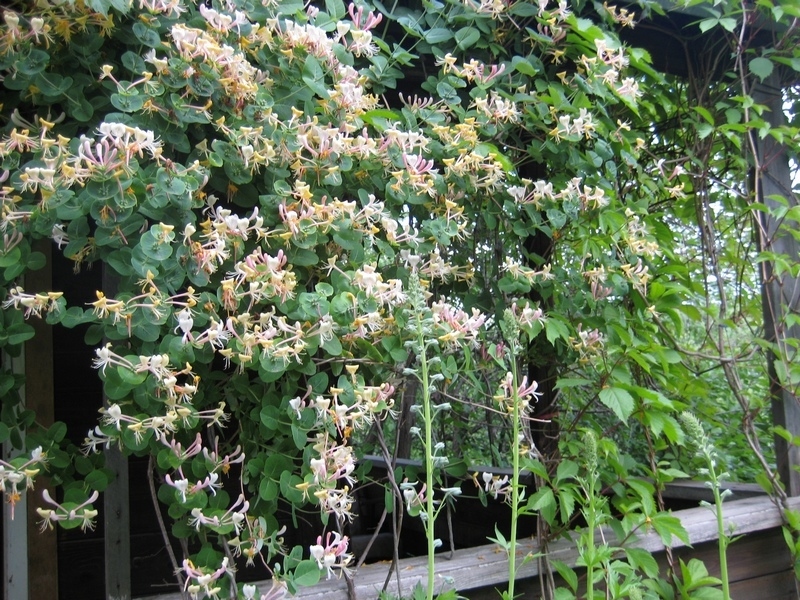 Fence for the liana
Fence for the liana Fluffy honeysuckle Capryfol: frost resistance of the plant. Honeysuckle Capryfall - preparation for winter: whether it is necessary to cover?
"Capryfol" is sufficiently frost-resistant liana. However, if the plant is young( up to 2-3 years), it can "freeze" if the winter is cold( -30, -40 degrees).In other cases, frozen shoots( most often young ones) can simply be cut off in early spring.
IMPORTANT: You can "wrap" the vine from frost using synthetic bags or bags that should be attached to the fence by the stapler during the low temperature period.
Honeysuckle Capryfol in landscape design: photo
"Capryfol" will certainly decorate your land. To select a variety of plants and find the desired way to decorate the homestead, it is useful to see photos of landscape design with honeysuckle.
Options:
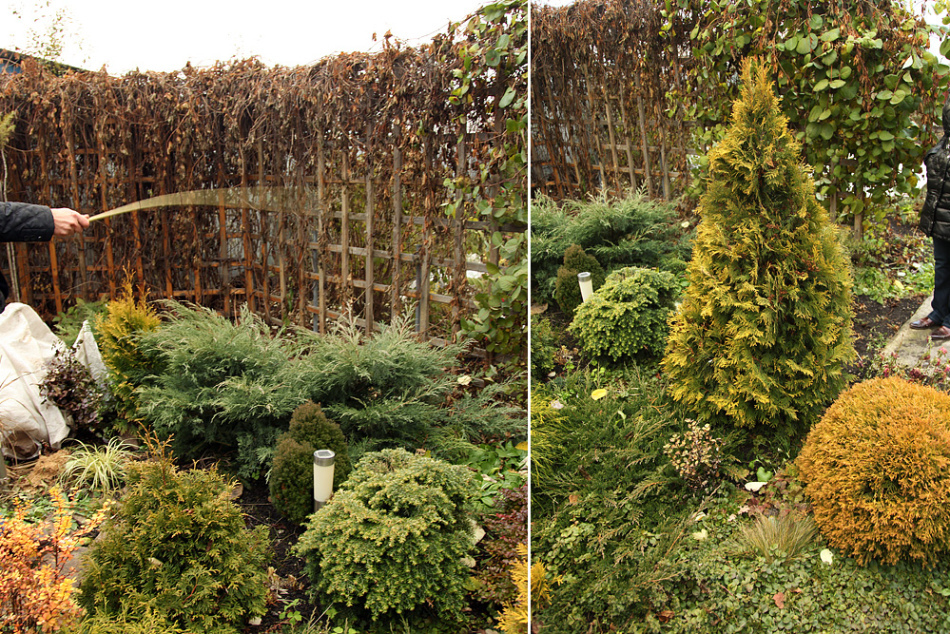 hedgehog
hedgehog 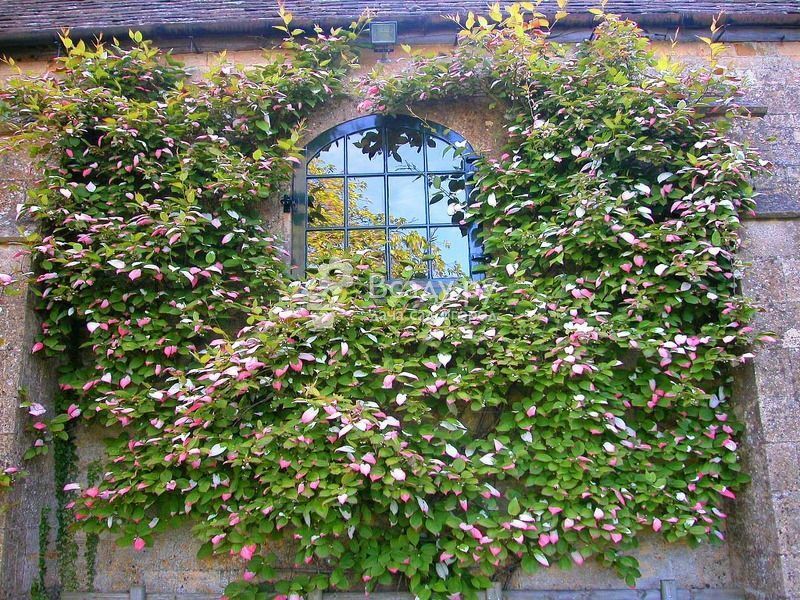 Around the window
Around the window 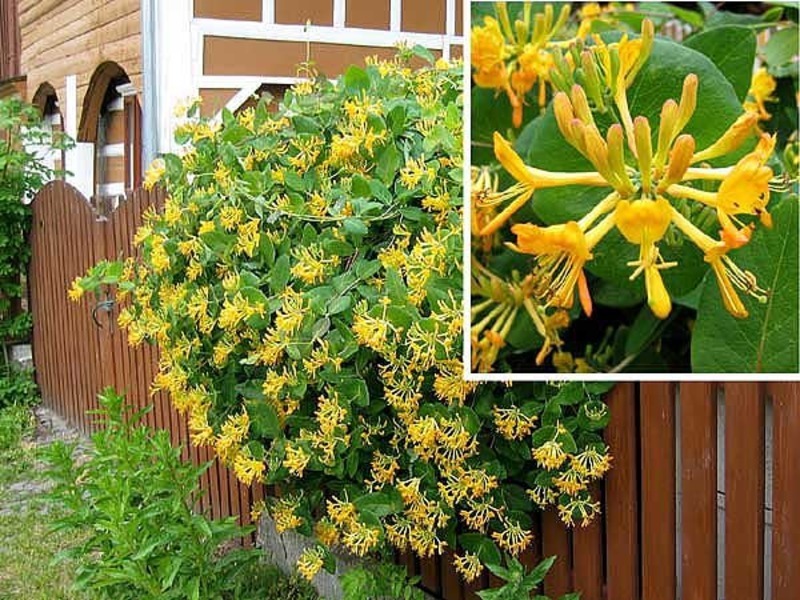 On the fence
On the fence  Altanka
Altanka 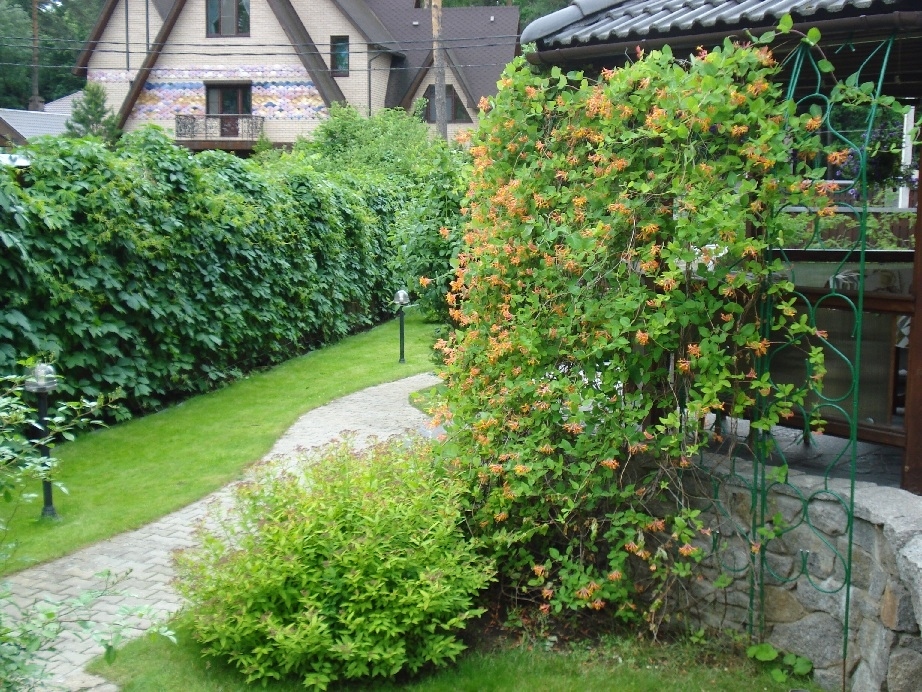 Decor of the yard
Decor of the yard 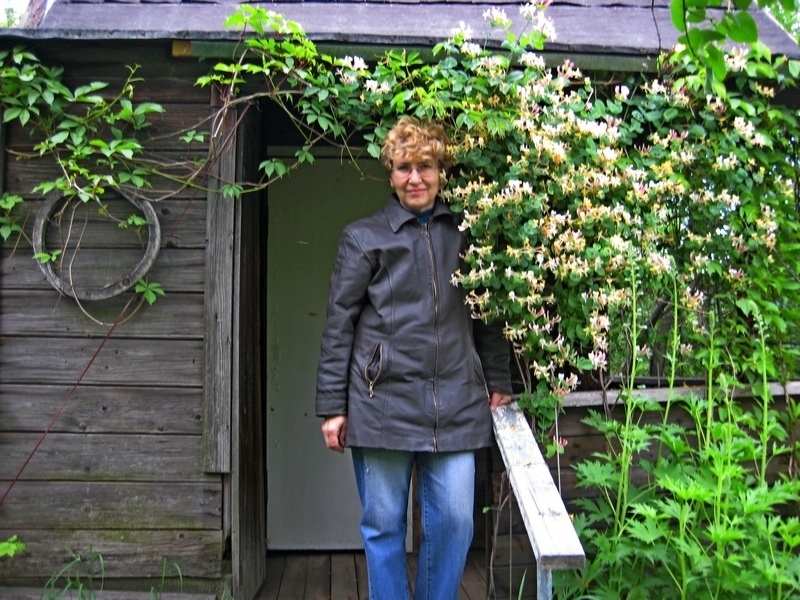 "Living" support of the courtyard
"Living" support of the courtyard 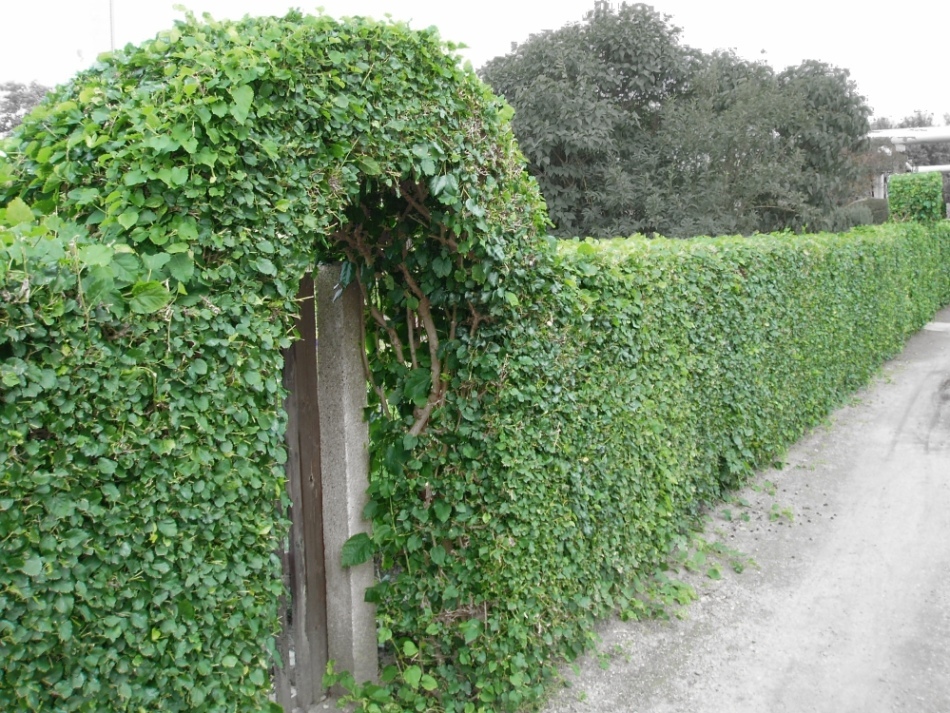 Arch
Arch Honeysuckle Capryfall: can I eat berries?
Decorative liana "Capryfol" is not suitable for eating. In autumn, not more round carrot-colored berries ripen from flowers, but do not try to eat them, because this can trigger not only an allergic reaction, but also poisoning( nausea, vomiting, diarrhea, urticaria).
